DapuStor R5100 Challenges “Noisy Neighbor” Performance Testing
Imagine you have rented an apartment building where each apartment has its own separate space. It allows you to arrange and use the space according to your needs and preferences without being disturbed by the behavior of other tenants. This explains what "multiple namespaces" is: it enables different tenants to share space on the same SSD without worrying about performance consistency and isolation.
Multi-tenant SSDs aim to provide stable storage quality of service (QoS) for each tenant while maximizing the utilization of storage resources and overall performance. Different tenants have different I/O performance requirements, and there is also the issue of noise interference, just like some neighbors in your apartment building may make noise, which can result in unstable and unpredictable performance.
The DapuStor R5100 NVMe SSD is a low-latency, high-performance, and highly reliable product that utilizes the company’s in-house controller DP600, firmware, and KIOXIA 3D Enterprise TLC. It is well-suited for core storage demands in industries such as enterprise IT, telecommunications, internet, finance, intelligent manufacturing, AI, and big data analytics.
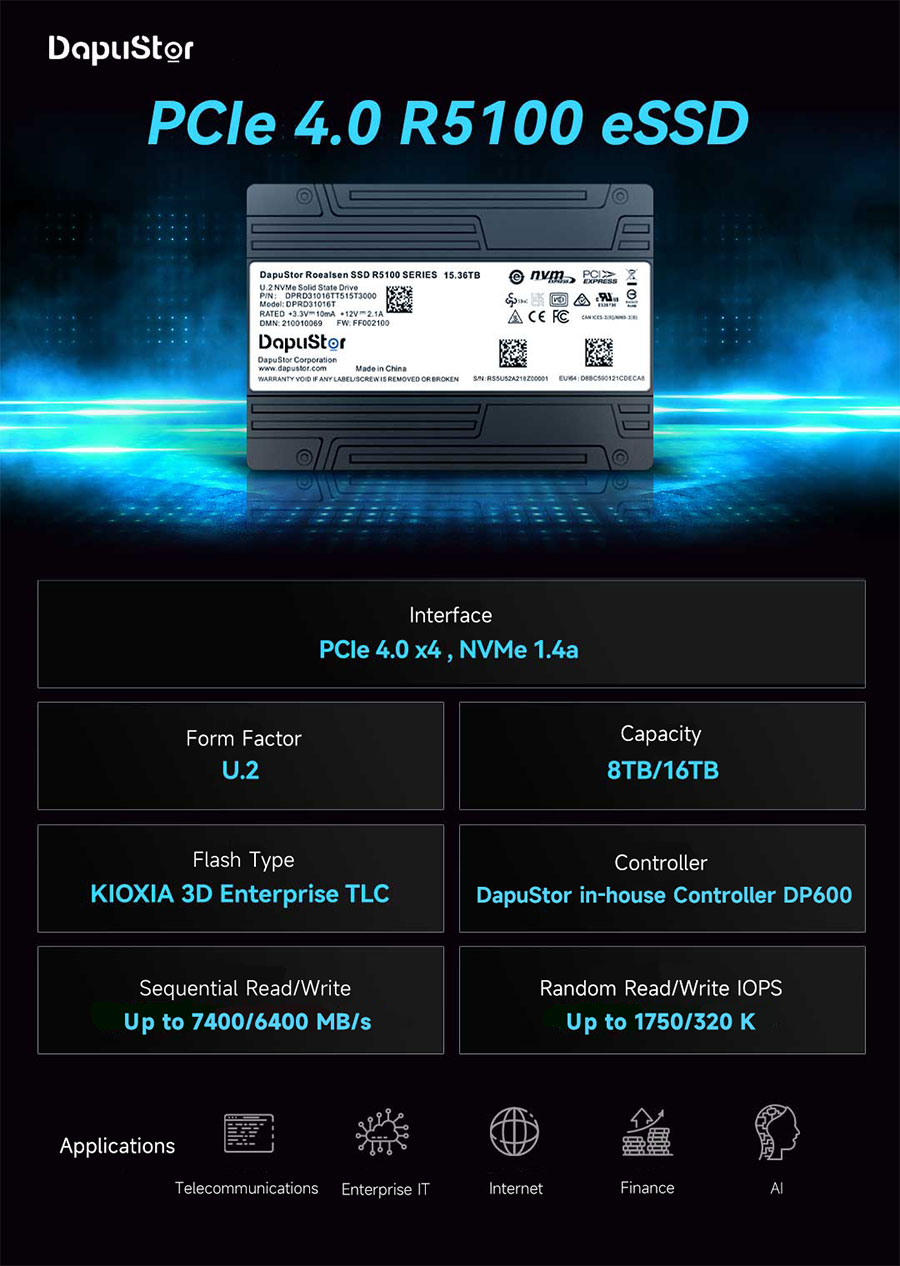
Next, we will conduct a "noisy neighbors" testing using the DapuStor R5100 NVMe SSD along with two other well-known NVMe SSDs in the industry to see if the impact of different SSDs on noisy neighbors is consistent. This will provide us with a clearer picture of their performance in practical applications.
01 Testing
Our testing environment is as follows:
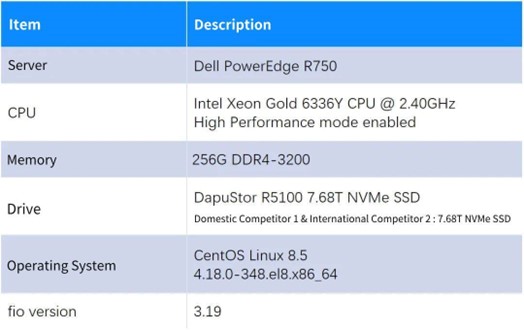
Creating Noisy Neighbors
First, create six namespaces on a drive, each having a capacity of 1.02TB. Then perform simultaneous read and write operations on these namespaces, where the first three namespaces involve 8QD writes with different block sizes (4k, 8k, 16k), and the last three involve 1QD reads with different block sizes (4k, 8k, 16k). After the testing is completed, record the QoS for each read.
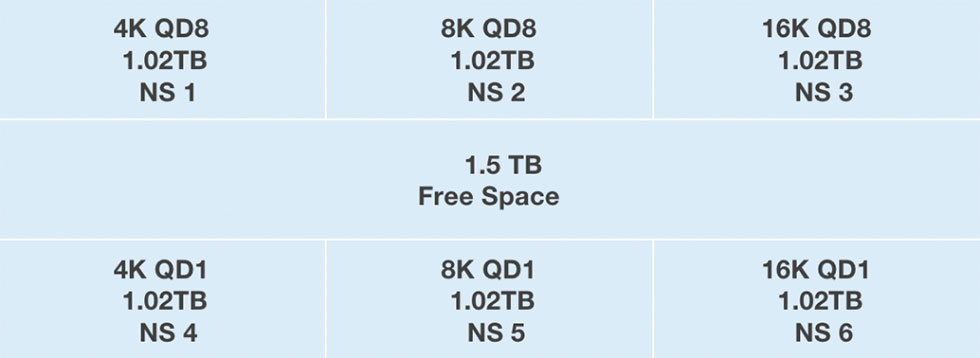
02 Testing Data
QD1 Random Read QoS CLAT
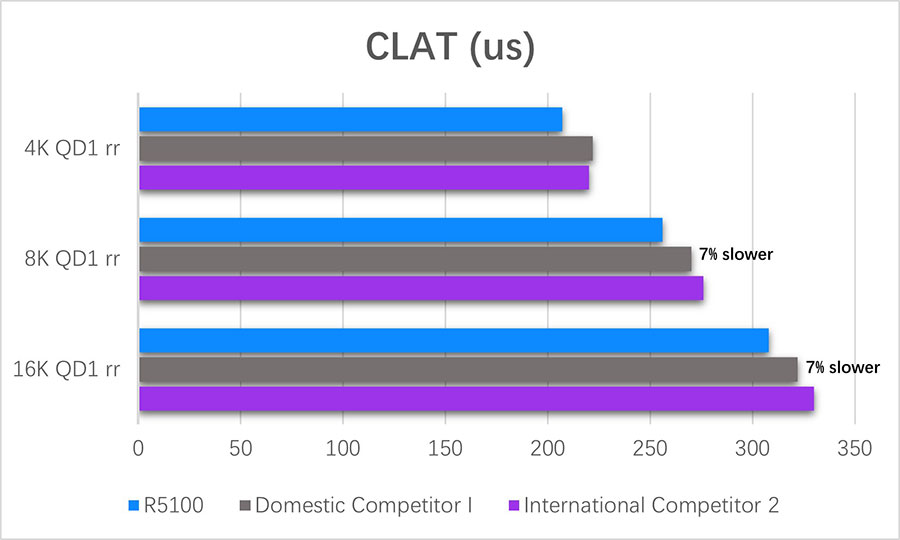
When the block size is 4k, 8k, and 16k, compared to competitor’s drives, the DapuStor R5100 SSD has lower average latency for random reads, with an average response time reduction of up to 7%.
QD1 Random Read QoS 99.99
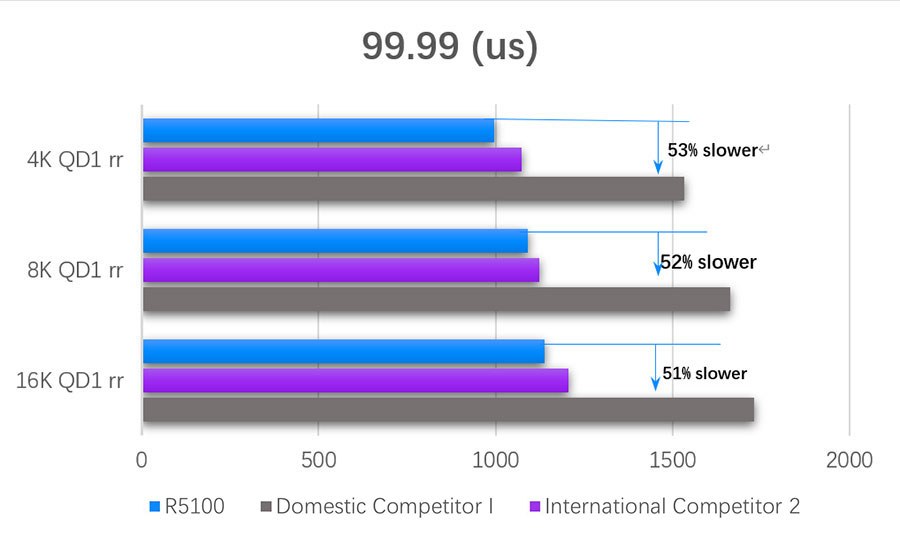
When the block size is 4k, 8k, and 16k, the DapuStor R5100 SSD outperforms the competitor’s drives in terms of 99.99% QoS for random reads. In the case of a 4k block size, the R5100 achieves a response time of 996 us at 99.99% QoS, compared to 1074 us for International Competitor 2 and 1532 us for Domestic Competitor 1. On average, it reaches a maximum reduction of 53% in response time compared to competitor drives.
QD1 Random Read QoS 99.999
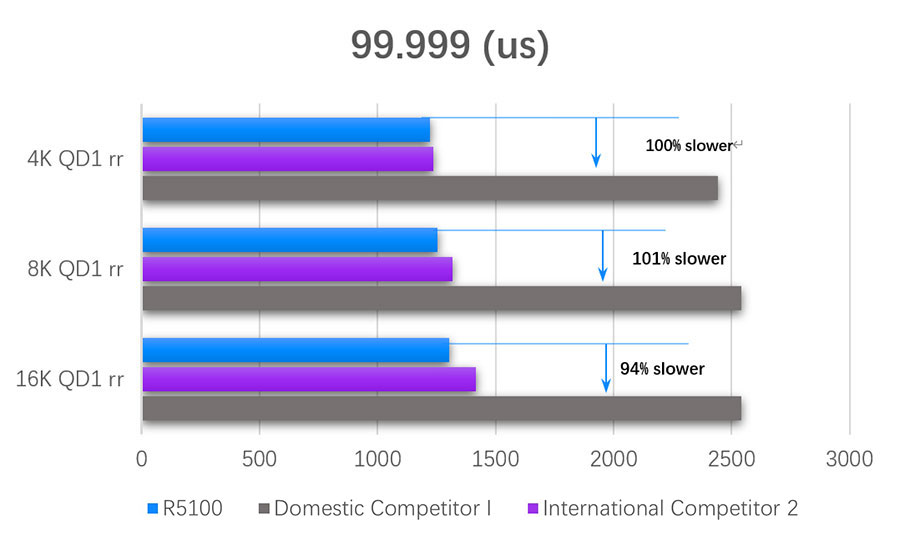
For 4k, 8k, and 16k block sizes, the DapuStor R5100 SSD outperforms competitor drives with 99.999% QoS for random reads. At a 4k block size, the R5100 achieves a response time of 1221 us, compared to 1237 us for International Competitor 2 and 2442 us for Domestic Competitor 1.
03 Summary
The results above clearly indicate that, in the “noisy neighbor” testing, the DapuStor R5100 SSD demonstrates higher performance and QoS compared to competitor drives. Compared to International Competitor 2, it has a slight advantage in QoS consistency. However, it exhibits a 100% advantage in 99.999% QoS compared to Domestic Competitor 1. This is because the R5100 implements a multi-namespace io balancing scheduling algorithm and dynamic data flushing policies between namespaces to ensure high QoS for different workloads in a multi-tenant environment.
